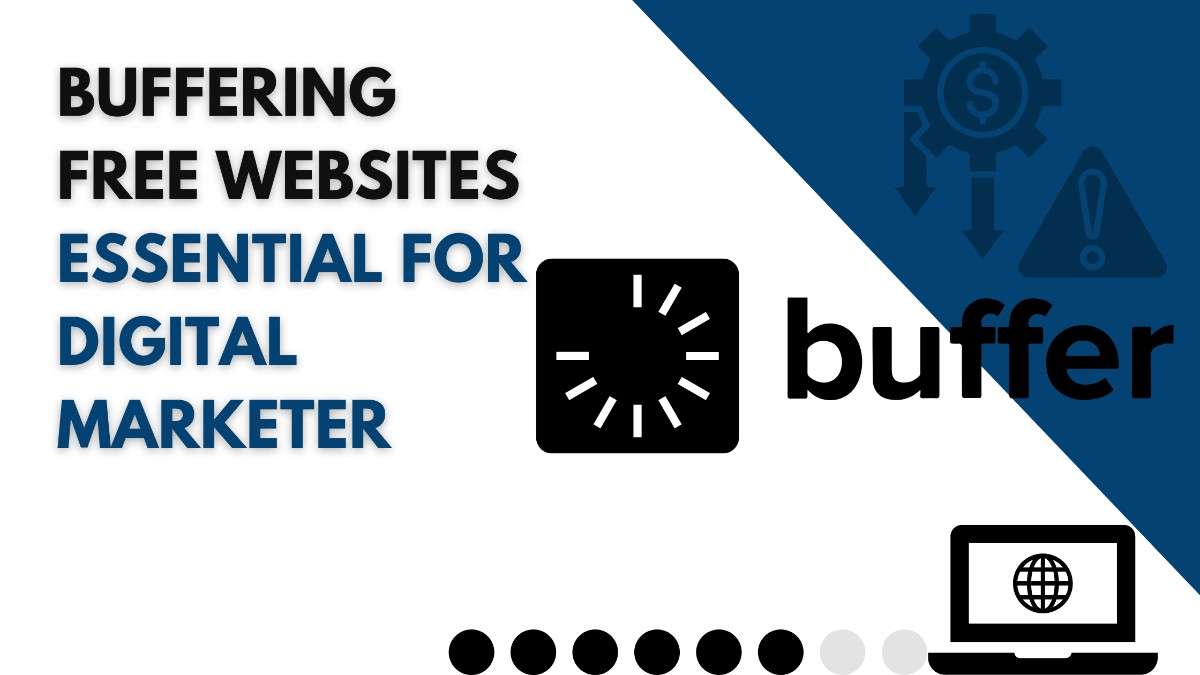
Introduction
In today’s hectic digital world, every second is important. For digital marketers, a website that buffers or loads slowly affects results right away as well as to serving as a hassle.Website performance is essential because buffering frustrates consumers, lowers engagement, and may negatively affect conversions.
The Impact of Buffering on User Experience
The consumer’s experience is greatly impacted by website buffering. Customers expect instant page loads. Conversion rates can drop by up to as 7% in even a one-second delay. It also results in lower revenue, fewer leads, and lower campaign performance for online advertisers.
The general impression of a brand is additionally adversely affected by a slow web page. Clients may believe that an organization is unreliable or rude. Conversely, a quick, buffer-free website makes a good first impression and helps digital marketers to win the audience’s confidence and trust.
Buffering and SEO
User experience was a top priority for search engines like Google. Pages that frequently buffer or respond slowly have a decreased likelihood of appearing extremely in search results. Organic traffic is impacted by slower websites, lowering the efficiency of SEO and content marketing campaigns.
It issues must be solved by digital marketers who rely on SEO for producing leads. Optimizing speed increases search visibility, enhances marketing campaign effectiveness, and improves engagement.
How Buffering Affects Conversions
It has an immediate impact on conversions in along with irritating visitors. Every second of delay can cost your potential customers, whether your objective is lead generation, e-commerce sales, or newsletter sign-ups. For instance, campaign landing pages perform badly if it occurs, and e-commerce sites suffer higher rates of cart abandonment when pages load slowly.
For digital marketers to achieve their campaign goals, a website that is swift and fluid ensures that users can navigate, access content, and complete actions in simplicity.

How Digital Marketers Can Cut Down on Buffering
Knowing about buffer is essential yet digital advertisers might not always be in control of website development. Essential procedures comprise of Optimize you are videos and pictures by using web-friendly formats and reducing large files.
Use content delivery networks (also known as CDNs) to speed out loading times worldwide. CDNs disperse content across servers.
- Avoid Scripts and Plugins : Get rid of unnecessary code and employ fewer plugins as feasible.
- Turn in browser caching to quicken up the loading time for those who return.
Track website performance via tools like Pingdom and GTmetrix, and Google PageSpeed Insights to identify buffering issues and monitor fixes.
Conclusion
It impacts user experience, SEO, and conversions, resulting in more than just a technical issue for digital marketers. Websites with no buffering enhance user engagement, campaign effectiveness, and search engine rankings.
Digital marketers may make sure their campaigns effectively and efficiently reach the right audience through placing the greatest emphasis on website speed and performance optimization Slow websites are a liability in the competitive digital world, but sites with no buffering offer chances for greater participation, higher conversions, and more robust growth.



